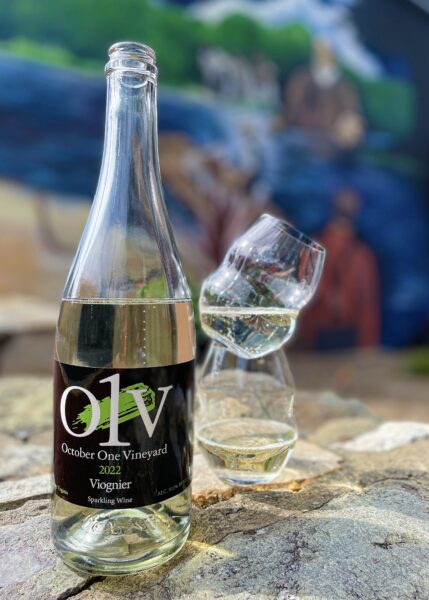
As the clock struck midnight on New Year’s Eve and the curtain closed on 2023, people all around the world came together to bid farewell to the past and usher in 2024 with joy and excitement. One of the most popular ways to toast the momentous occasion is by raising a glass of sparkling wine. Most enthusiasts and casual consumers alike love that fabulous fizz, but did you know that behind every effervescent sip lies a meticulous and fascinating process of production? It’s the unique methods that impart distinct character to each type of sparkling wine. Let’s dive in…
- Traditional Method
- Primary Fermentation: Base wine is created from grapes, followed by the addition of yeast and sugar to induce fermentation.
- Aging on Lees: Bottles are stored horizontally, allowing the wine to age on lees (dead yeast cells), contributing to complex flavors.
- Riddling and Disgorging: Bottles are gradually turned and tilted to move sediments to the neck. The neck is then frozen, and the plug of frozen sediment is disgorged.
- Dosage: A mixture of wine and sugar (dosage) is added to determine the level of sweetness before final corking.
- Tasting Notes: Known for its crisp acidity, fine bubbles and diverse flavor profiles ranging from citrusy to toasty.
- Pairings: Ideal with oysters, soft cheeses and light appetizers
- Charmat or “Tank” Method
- Primary Fermentation: Similar to the traditional method, base wine is produced with added yeast and sugar.
- Pressurized Tanks: Secondary fermentation takes place in pressurized tanks rather than individual bottles, resulting in larger, frothier bubbles.
- Filtration: After fermentation, the wine is filtered and the carbonation is adjusted.
- Final Bottling: The finished sparkling wine is bottled under pressure to maintain its effervescence.
- Tasting Notes: Typically lighter and fruitier than Champagne, with notes of apple, pear and floral aromas.
- Pairings: Perfect with Salty snacks, seafood dishes and fresh fruit. Or, enjoy as an aperitif or mix with fruit juices for a refreshing cocktail.
- Forced Carbonation
- Base Wine: Grapes are fermented to create a base wine
- Carbonation: Carbon dioxide is introduced to the base wine using various methods, such as injecting gas or using a carbonation tank.
- Bottling: The carbonated wine is bottled, capturing the effervescence.
- Ancestral Method (Petillant Naturel, aka “Pet-Nat”)
- Fun Fact: Methode Ancestrale is the oldest known technique of winemaking, dating back to 1531!
- Harvesting: Grapes are typically harvested earlier than those for still wines to ensure lower sugar levels and a lighter and fresher sparkling wine.
- Primary Fermentation: Grapes are crushed to extract juice, which is transferred to a vessel where the fermentation process begins.
- Bottling: Before the primary fermentation is complete, the wine is bottled, allowing the remaining sugars and yeast to create carbon dioxide naturally, resulting in effervescence.
- No added yeast or sugar: Unlike the traditional method, Pet-Nats rely solely on residual sugars and yeast present in the unfinished wine, which contributes to the sweetness of the final product.
- Crown Cap Closure: Pet-Nats are typically sealed with a crown cap, allowing the carbon dioxide produced during fermentation to be retained in the wine.
- Sur Lie Aging: After bottling, Pet-Nats are often aged on the lees (sediment consisting of dead yeast cells and grape particles), adding complexity and texture to the wine.
- Disgorging: Some producers choose not to disgorge the wine, leaving the sediment in the bottle. This results in a slightly cloudy appearance, adding to the natural and unfiltered aspect of Pet-Nats.
- Enjoy now! Petillant Naturel is best consumed young and fresh. Its lively effervescence, vibrant fruit flavors, and a hint of residual sweetness make it a fantastic, easy-drinking sparkling wine.
As we ring in the new year, consider adding a touch of effervescence to your celebration with one of these delightful sparkling wines. Each sip will contribute to a memorable and bubbly beginning to the year ahead. Reminder to stay tuned for the upcoming release of October One Vineyard’s second vintage of sparkling Viognier, sure to be a local favorite!
Cheers to 2024 and a year filled with joy, prosperity and…of course, delicious bubbles!